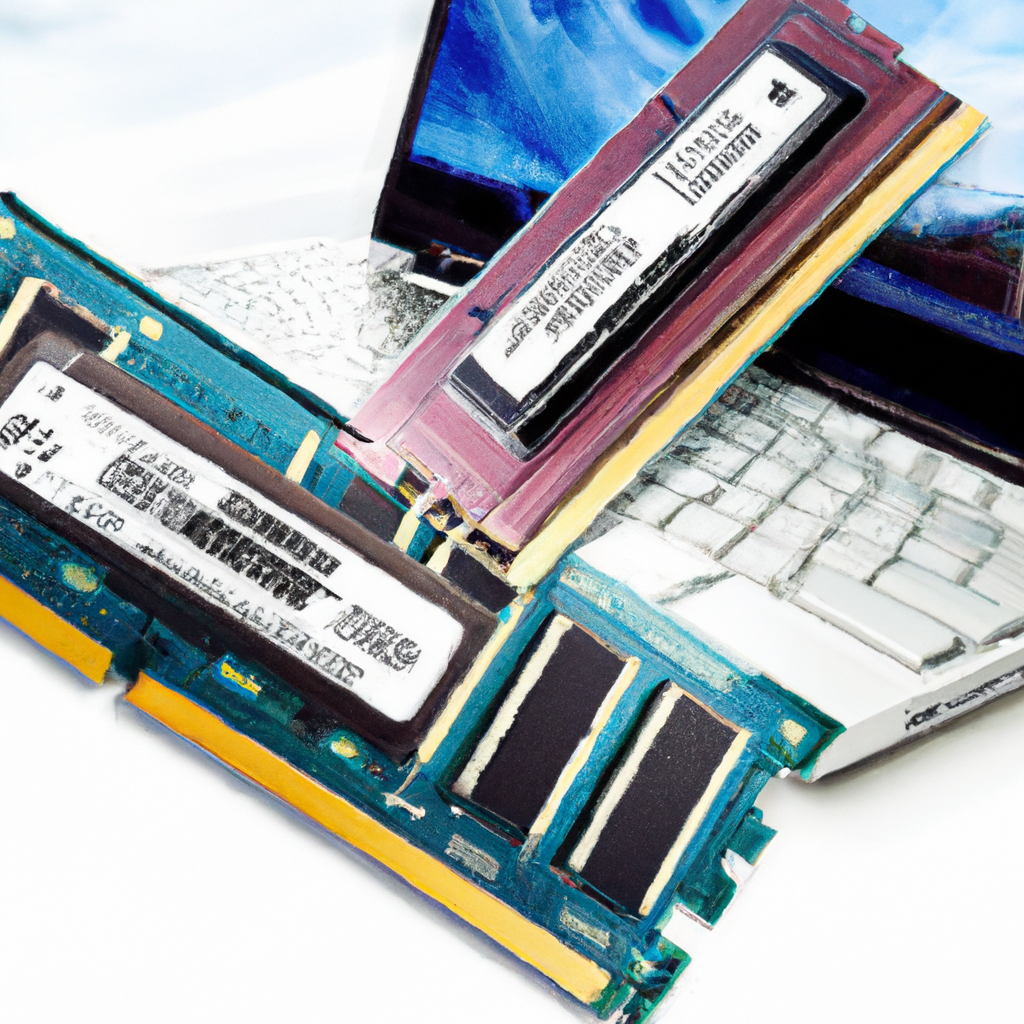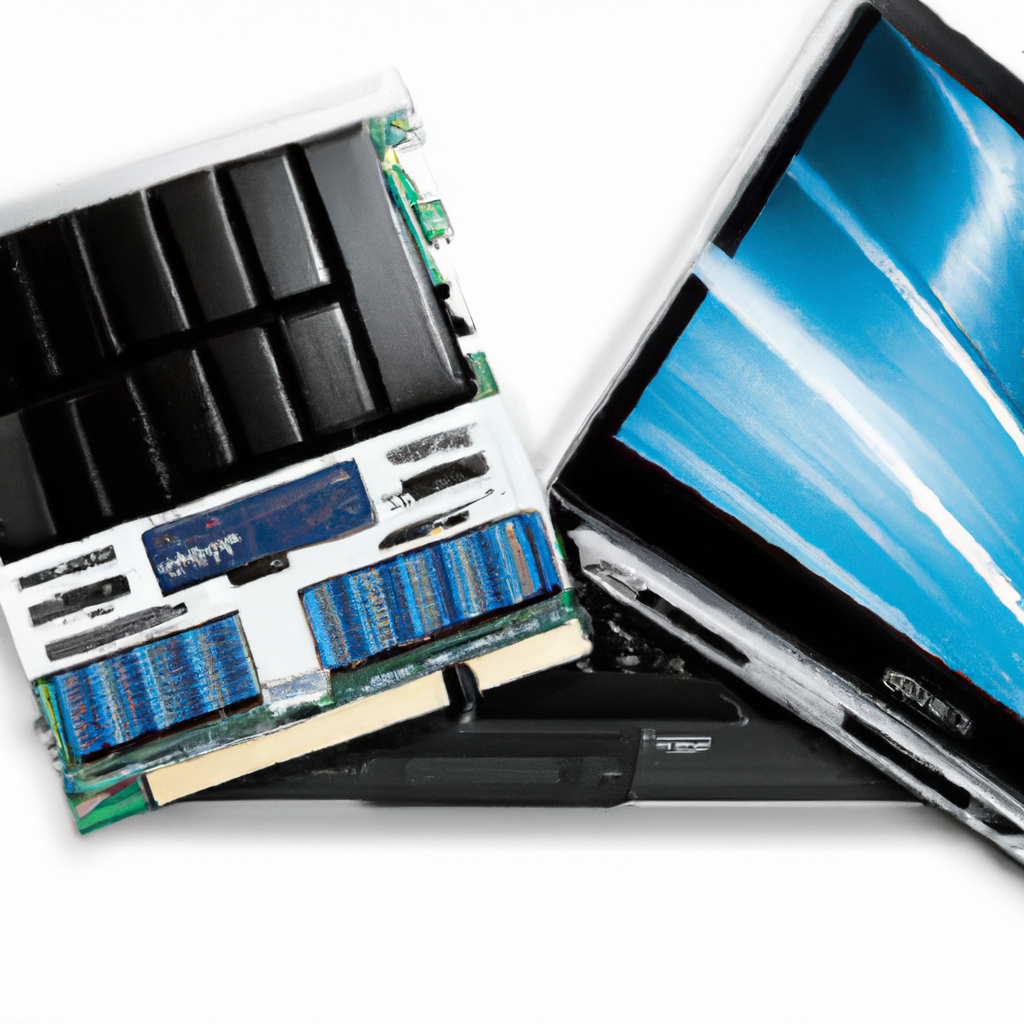If you’ve ever found yourself wondering whether you should opt for 16GB or 32GB of RAM, you’re not alone. With the increasing demands of multitasking, gaming, and resource-intensive applications, it’s crucial to have enough memory to keep your computer running smoothly. In this article, we’ll explore the differences between 16GB and 32GB RAM, helping you make an informed decision about which option is best for your needs. So, sit back, relax, and let’s dive into the world of memory!

This image is property of pixabay.com.
Difference between 16GB and 32GB RAM
When it comes to choosing the right amount of RAM for your computer, it can be a difficult decision. Two common options are 16GB and 32GB RAM, each with their own benefits and considerations. In this article, we will explore the differences between these two memory capacities and help you determine which one is best suited for your needs.
Memory capacity
Before delving into the differences between 16GB and 32GB RAM, let’s first understand what RAM actually is. RAM stands for Random Access Memory, and it is a type of volatile memory that stores data temporarily. Unlike your computer’s hard drive, which stores data permanently, RAM is used by your computer to quickly access and manipulate data while it is actively being used.
The main benefit of having more memory capacity is the ability to run more applications and processes simultaneously without experiencing performance issues. Having more RAM allows your computer to store more temporary data, resulting in smoother multitasking and faster response times.
Certain applications, such as video editing software, 3D modeling programs, and virtual machines, require a significant amount of RAM to function optimally. These resource-intensive applications rely heavily on RAM to store and manipulate large amounts of data. If you frequently use such applications, having a higher memory capacity like 32GB can greatly improve your overall performance and workflow.
Performance
RAM plays a crucial role in determining the performance of your computer. More RAM generally leads to better performance, especially when it comes to multitasking and handling memory-intensive tasks.
For most casual users who primarily use their computers for web browsing, document editing, and multimedia consumption, 16GB RAM is more than sufficient. It allows you to run multiple applications simultaneously without experiencing any noticeable slowdowns.
However, if you are an avid gamer or a professional involved in resource-intensive tasks such as video editing, rendering, or 3D modeling, 32GB RAM can significantly enhance your performance. Games and resource-intensive applications benefit from having a larger amount of available RAM, as it allows for smoother gameplay, faster rendering times, and reduced lag.
It’s important to note that the impact of RAM on performance varies depending on the specific software or application you’re using. Some software may not be able to utilize the full potential of 32GB RAM, while others may require at least that amount to operate optimally. Therefore, it’s essential to consider your specific usage scenario before deciding on the amount of RAM you need.
Price
Price is an important consideration when choosing between 16GB and 32GB RAM. Generally, 32GB RAM modules are more expensive than their 16GB counterparts. The price difference can vary depending on the brand, model, and type of RAM you choose.
Other factors, such as the speed and brand reputation, can also affect the price of RAM. Higher speed RAM modules tend to be more expensive, and well-known brands often come with a premium. It’s important to balance your budget with your performance needs when making a decision.
It’s worth noting that prices for RAM modules can fluctuate over time, so it’s a good idea to do some research and compare prices from different sellers before making a purchase. Additionally, keep in mind that the overall cost of upgrading your RAM may also include installation fees if you plan on having a technician assist you.
Future-proofing
Future-proofing is an important consideration when investing in computer hardware. While it’s impossible to predict exactly how technology will evolve in the future, having more RAM can provide certain advantages.
As technology advances and software becomes more resource-intensive, having a higher memory capacity can help your computer handle future demands more effectively. By choosing 32GB RAM, you are ensuring that your system has enough memory for upcoming advancements in software and technology.
Another aspect to consider when future-proofing is the ability to upgrade and expand your RAM in the future. Some computer systems may have limited or no options for expanding their memory capacity, so it’s important to check the specifications of your system before making a decision. If your system allows for easy RAM upgrades, starting with 16GB and later expanding to 32GB when needed may be a viable option.
Usage scenario
Determining the appropriate RAM capacity for your specific usage scenario is crucial in making an informed decision. Different tasks have varying memory requirements, and this can greatly impact the performance of your computer.
For casual users who primarily use their computers for web browsing, document editing, and multimedia consumption, 16GB RAM is generally more than enough. It provides ample memory for running multiple applications simultaneously without experiencing any significant slowdowns.
If you are involved in content creation, such as graphic design, photography, or video editing, 32GB RAM can greatly enhance your workflow. These tasks often require the manipulation of large files and the use of memory-intensive applications. Having a higher memory capacity allows you to work with larger files and multitask without sacrificing performance.
Gaming and virtual reality (VR) enthusiasts can also benefit from 32GB RAM. Many modern games and VR applications require a significant amount of memory to run smoothly. By utilizing 32GB RAM, you can ensure an optimal gaming experience with reduced lag and faster loading times.
Data-intensive tasks and heavy multitasking, such as running virtual machines or complex simulations, can also benefit from 32GB RAM. These tasks often require a significant amount of memory to store and process large amounts of data simultaneously. With 32GB RAM, you can handle these resource-intensive tasks with ease.
What is the recommended RAM size?
The recommended RAM size depends on several factors, including your specific usage scenario and the minimum requirements of your operating system.
To determine the appropriate RAM size, consider the following factors:
-
Usage: Assess the nature of your computing needs. Determine whether you are a casual user, a content creator, a gamer, or someone involved in data-intensive tasks.
-
Operating System: Different operating systems have their own minimum RAM requirements. For instance, Windows 10 recommends a minimum of 4GB RAM, but for optimal performance, 8GB or more is recommended. macOS typically requires a minimum of 8GB RAM, while Linux distributions also vary in their RAM requirements.
-
Future Needs: Consider your future needs and the rate at which technology is advancing. If you plan on keeping your computer for several years or anticipate the need for heavier applications, it may be wise to choose a higher RAM capacity like 32GB.
Based on these considerations, recommended RAM sizes for different user types can be defined as follows:
- Casual users: 8GB to 16GB RAM is generally sufficient.
- Content creators and multitaskers: 32GB RAM is recommended for smooth workflow and optimum performance.
- Gamers and VR enthusiasts: 32GB RAM ensures a seamless gaming experience with reduced lag and faster loading times.
- Data-intensive tasks and heavy multitasking: 32GB RAM is highly recommended to handle resource-intensive tasks effectively.
Performance comparison: 16GB vs. 32GB RAM
To better understand the performance differences between 16GB and 32GB RAM, let’s look at real-world performance tests and benchmark comparisons.
Real-world performance tests have shown that while most casual users may not notice a significant performance difference between 16GB and 32GB RAM, professionals and enthusiasts involved in memory-intensive tasks can benefit greatly from higher memory capacity. Tasks such as video editing, rendering, and 3D modeling consistently show improved performance with 32GB RAM.
Benchmark comparisons also highlight the advantages of having 32GB RAM. Higher memory capacity allows for smoother multitasking, faster loading times, and improved overall system responsiveness. Benchmark scores in memory-intensive applications, such as Adobe Premiere Pro, Autodesk Maya, and virtual machines, consistently show higher performance with 32GB RAM.
Although the performance gains may not always be substantial, the ability to handle larger files and run more memory-intensive applications simultaneously can significantly enhance productivity and workflow, especially for professionals and power users.
Specific scenarios where 32GB RAM outshines 16GB RAM include:
-
Video editing and rendering: Editing high-resolution videos and rendering complex visual effects can be resource-intensive. With 32GB RAM, you can work with larger files and experience shorter rendering times.
-
3D modeling and animation: Creating intricate 3D models and animations often requires significant memory resources. 32GB RAM provides the necessary capacity to handle complex projects smoothly.
-
Virtual machines: Running virtual machines allows for the creation of isolated environments with separate operating systems. Each virtual machine requires its own dedicated resources, including RAM. With 32GB RAM, you can run multiple virtual machines simultaneously without sacrificing performance.
-
Resource-intensive software: Certain software, such as advanced scientific simulations, engineering applications, and big data analysis tools, require substantial memory resources. By utilizing 32GB RAM, you can comfortably run these applications and handle data-intensive tasks smoothly.
While 16GB RAM may suffice for most everyday tasks, 32GB RAM offers a noticeable performance boost for those involved in memory-intensive tasks and running resource-intensive applications.
Upgrading from 16GB to 32GB RAM
If you already have 16GB of RAM and are considering upgrading to 32GB, there are a few essential considerations to keep in mind.
First, ensure that your computer’s motherboard and operating system support a higher memory capacity. Check the manufacturer’s specifications or consult with a professional to confirm compatibility. Some older systems or laptops may have limitations on the maximum amount of RAM they can support.
Next, consider the cost-benefit analysis of upgrading. Assess whether the potential performance gains and increased memory capacity justify the upgrade cost. Evaluate the overall performance of your computer and assess if your current tasks and usage scenarios would benefit from the additional RAM.
It’s also important to evaluate other components of your system, such as the CPU and storage drives. In some cases, upgrading these components may provide a more significant performance boost than increasing the RAM capacity alone.
Lastly, consider the potential drawbacks of upgrading. Upgrading to 32GB RAM may increase power consumption and generate more heat, which could potentially impact the overall stability and lifespan of your system. Ensure that your computer has adequate cooling and power supply capabilities to support the increased demands of higher RAM capacity.
In summary, upgrading from 16GB to 32GB RAM can offer significant performance enhancements for memory-intensive tasks and resource-intensive applications. However, it’s important to consider compatibility, cost-effectiveness, and the overall capability of your system before making the decision to upgrade.

Summary and conclusion
Choosing the right amount of RAM is crucial to ensure optimum performance and functionality for your computer. While both 16GB and 32GB RAM offer their own benefits, the decision ultimately depends on your specific usage scenario and budget.
16GB RAM is generally sufficient for casual users who primarily engage in web browsing, document editing, and multimedia consumption. It provides ample memory for multitasking and everyday computing tasks.
On the other hand, 32GB RAM is recommended for professionals and power users who frequently engage in memory-intensive tasks and run resource-intensive applications. It offers enhanced performance, smoother multitasking, and the ability to handle larger files and complex projects.
Considerations such as future-proofing, compatibility, cost, and the performance requirements of your specific tasks should all be taken into account when making your decision. By evaluating these factors, you can choose the right amount of RAM that suits your needs and ensures optimal performance for years to come.
